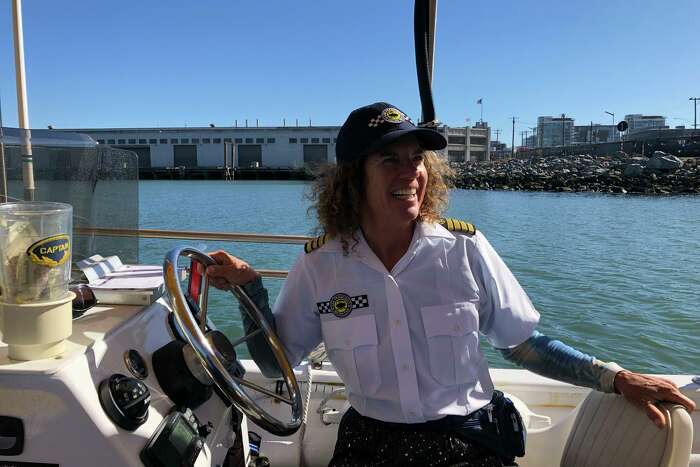One reason an S.F.-to-Santa Cruz railroad failed: The tracks fell into the ocean
Here’s an idea to remember: Never underestimate the power of memory.
Today’s example is a determined group of people in Pacifica on the foggy San Mateo County coast who are keeping alive the memory of the Ocean Shore Railway Co. railroad, which ran from San Francisco down the cliffs and across the oceanside valleys heading south toward Santa Cruz. The railroad never made it that far — it was the classic train to nowhere. It went broke after only 15 years. The last train ran 101 years ago.
Even its most fervent admirers have never seen an Ocean Shore train, but the story of the little railroad somehow represents the spirit of the coastside towns. The railroad was imaginative and scenic, and had a certain against-the-odds flair.
“The Ocean Shore was a dream, a beautiful dream,” said Deidra Crow, who has lived on the coast since she was a little girl and is one of the prime movers of a project to restore passenger Car 1409 and put it on display just off state Highway 1 in Pacifica’s Sharp Park district.
“To put it out there so people can come to our town and see how it was, well, that is our dream,” said Maxime Elizabeth Hines, a photographer, videographer and confessed cheerleader for the project.
“It’s a tangible part of our history,” Crow said. “The intangible part is someone will be able to sit in the passenger seat and imagine how it was riding that train.”
It’s hard to imagine that ride now, and even harder to imagine what the original investors saw in a cliff-hugging railroad down the thinly populated coast. The original idea was to build a double track electric-powered line from San Francisco to Santa Cruz — sort of a turn-of-the-century BART operation.
It never worked out. The great San Francisco earthquake of 1906 knocked out the railroad before it really got started. The plans were scaled back, and when the Ocean Shore opened it was a conventional railroad with ordinary steam engines. Six new passenger cars were ordered from the Holman Car Co. in San Francisco. One of them was Car 1409.
The company advertised heavily. “Reaches the Beaches” was the main slogan. Developers pitched low-cost housing — $250 for a lot on Salada Beach, $10 down, $3 a month. Cheap rail fares for commuters — only $5 for a monthly pass.
They also talked about turning the foggy coast into a summer resort and advertised Rockaway Beach as “the Playground of San Francisco.” It didn’t work.
Worse yet, the railroad was built on the unstable cliffs that line the coast including the infamous Devil’s Slide where Montara Mountain meets the Pacific. It was tough keeping the line open. The tracks kept falling into the ocean.
It was only half a railroad anyway: The north end from San Francisco to just past Half Moon Bay never connected with the south end heading up from Santa Cruz. There was a 26-mile gap. After the summer of 1920, it was only a memory.
“But it brought development to the coastside,” Crow said. Eventually, all the little villages became towns. Out of it grew Pacifica, nine small communities incorporated as a city as recently as 1957.
Now Pacifica has a population of just over 33,000, “an enchanted and magical place,” Crow said. “And a city of volunteers.”
One of the historical society’s volunteer-led projects was to restore the town’s first church, built in 1910, right alongside the Ocean Shore tracks. Over the years, it had been everything from a place of worship to a social center, a school and a movie theater and finally a ruin. It was restored as the Pacifica Coastside Museum and community center with exhibits ranging from the Ohlone days to the present.







No comments:
Post a Comment